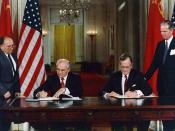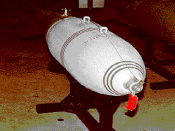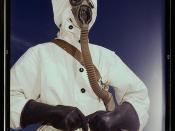CHEMICAL WARFARE
Tokyo, March 20, 1995.....
Another morning commute on the crowded Tokyo subway system. Destination of this particular train: the central government district in Tokyo.
A man wearing sunglasses boards the train, then immediately gets off at the next stop. Many of the passengers look puzzled at the package he left behind. It looks like a lunch box. Then it begins to seep a clear liquid from one corner. Passengers closest to the box begin to feel dizzy; many start bleeding from the nose and mouth.
In all, five such packages were released on the Tokyo subway system that morning. They had been disguised as lunch boxes, soda containers and brief cases. The clear chemical leaking from the lunch box was an impure solution of sarin. Developed by Nazi Germany in the nineteen thirties, sarin is a nerve agent closely related to organophosphorus insecticides used all over the United States.
Chemical weapons come in various degrees of severity and can cause many different effects. It is by these effects that they are classified into one of three categories. They are: nerve agents, blood agents, blister agents or choking agents. These are used in military operations to kill and do not include any chemicals used by police for riot control.
Nerve agents are a group of very toxic chemical agents. Most were developed before and during World War Two. The principle agents in this group are: GA (Tabun), GB (Sarin), GD (Soman), GF, and VX (methylphosphontioic acid). In their pure state nerve agents are colorless liquids with a faint "fruity" odor. These agents cause death within fifteen minutes of heavy exposure, and can be inhaled, absorbed through the skin, or sprayed in the eyes. Most nerve agents are easily made with the simplest of laboratory equipment. To illustrate how easy...


